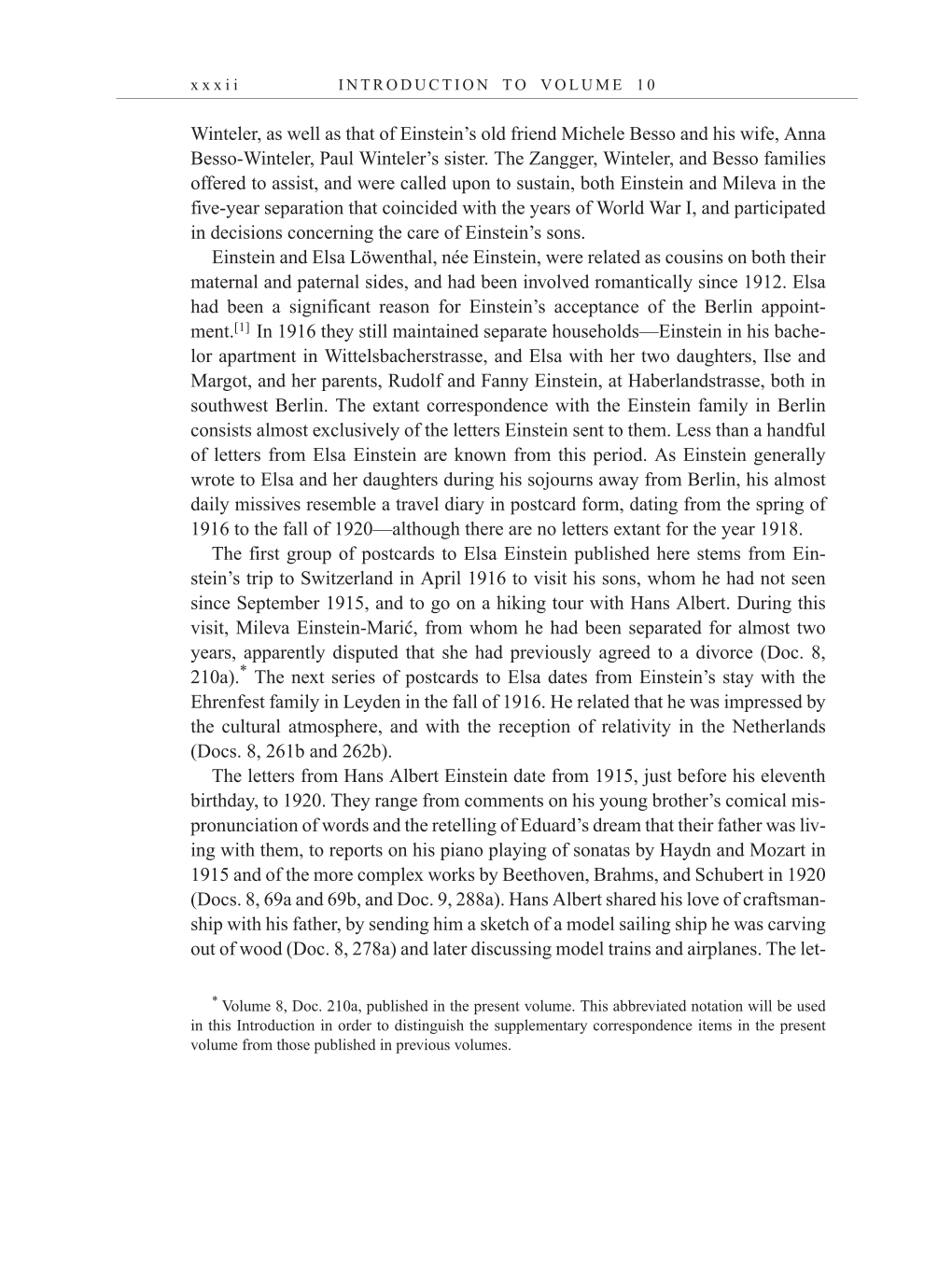x x x i i I N T R O D U C T I O N T O V O L U M E 1 0
Winteler, as well as that of Einstein’s old friend Michele Besso and his wife, Anna
Besso-Winteler, Paul Winteler’s sister. The Zangger, Winteler, and Besso families
offered to assist, and were called upon to sustain, both Einstein and Mileva in the
five-year separation that coincided with the years of World War I, and participated
in decisions concerning the care of Einstein’s sons.
Einstein and Elsa Löwenthal, née Einstein, were related as cousins on both their
maternal and paternal sides, and had been involved romantically since 1912. Elsa
had been a significant reason for Einstein’s acceptance of the Berlin appoint-
ment.[1]
In 1916 they still maintained separate households—Einstein in his bache-
lor apartment in Wittelsbacherstrasse, and Elsa with her two daughters, Ilse and
Margot, and her parents, Rudolf and Fanny Einstein, at Haberlandstrasse, both in
southwest Berlin. The extant correspondence with the Einstein family in Berlin
consists almost exclusively of the letters Einstein sent to them. Less than a handful
of letters from Elsa Einstein are known from this period. As Einstein generally
wrote to Elsa and her daughters during his sojourns away from Berlin, his almost
daily missives resemble a travel diary in postcard form, dating from the spring of
1916 to the fall of 1920—although there are no letters extant for the year 1918.
The first group of postcards to Elsa Einstein published here stems from Ein-
stein’s trip to Switzerland in April 1916 to visit his sons, whom he had not seen
since September 1915, and to go on a hiking tour with Hans Albert. During this
visit, Mileva Einstein-Maric;, from whom he had been separated for almost two
years, apparently disputed that she had previously agreed to a divorce (Doc. 8,
210a).*
The next series of postcards to Elsa dates from Einstein’s stay with the
Ehrenfest family in Leyden in the fall of 1916. He related that he was impressed by
the cultural atmosphere, and with the reception of relativity in the Netherlands
(Docs. 8, 261b and 262b).
The letters from Hans Albert Einstein date from 1915, just before his eleventh
birthday, to 1920. They range from comments on his young brother’s comical mis-
pronunciation of words and the retelling of Eduard’s dream that their father was liv-
ing with them, to reports on his piano playing of sonatas by Haydn and Mozart in
1915 and of the more complex works by Beethoven, Brahms, and Schubert in 1920
(Docs. 8, 69a and 69b, and Doc. 9, 288a). Hans Albert shared his love of craftsman-
ship with his father, by sending him a sketch of a model sailing ship he was carving
out of wood (Doc. 8, 278a) and later discussing model trains and airplanes. The let-
*
Volume 8, Doc. 210a, published in the present volume. This abbreviated notation will be used
in this Introduction in order to distinguish the supplementary correspondence items in the present
volume from those published in previous volumes.
